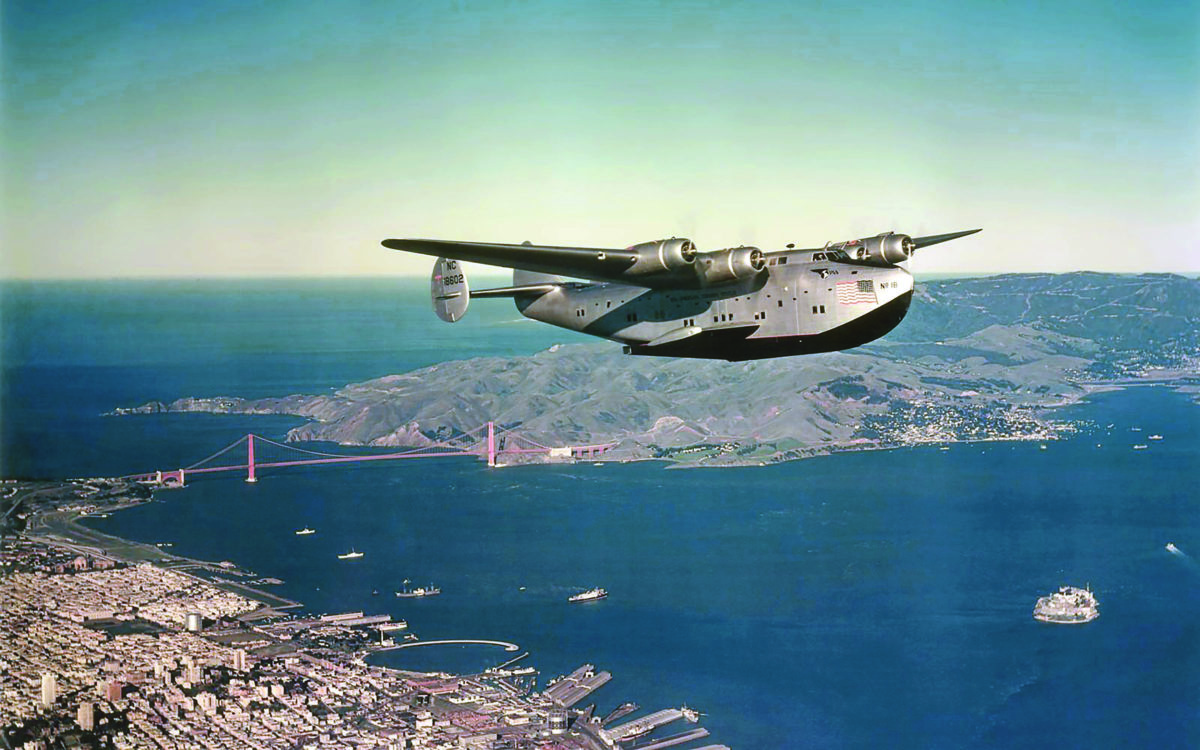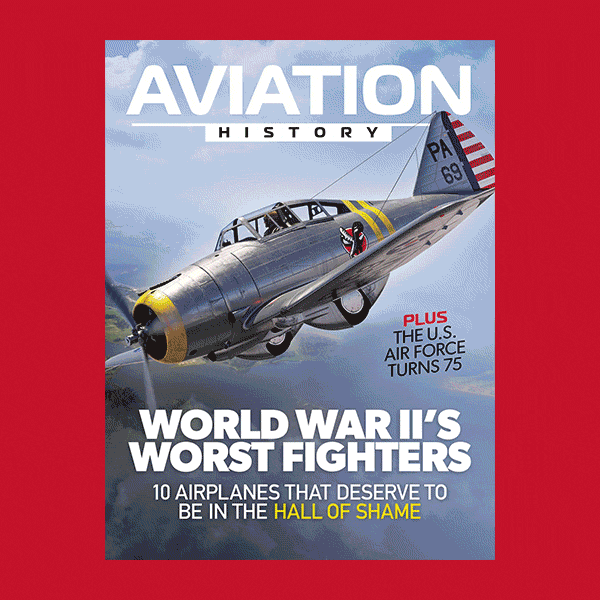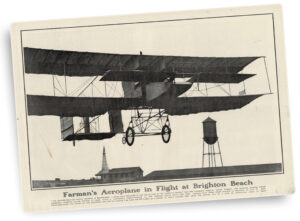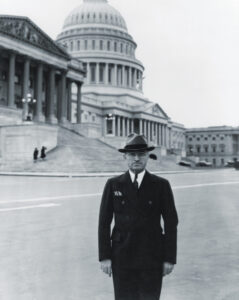Imagine boarding a luxurious winged ocean liner in midafternoon, then relaxing as it taxis slowly into San Francisco Bay. Suddenly there’s a mighty roar from its four engines and the behemoth accelerates. You watch through portholes as the spray diminishes. Then, almost imperceptibly, there’s a feeling of release as the giant flying boat breaks the water’s surface tension and lifts smoothly into the air. Shortly, at cruise altitude, the seat belt sign goes out and you experience the ultimate in cruise ship luxury: drinks served in crystal and cuisine fit for royalty on china. Some enjoy a berth for the all-night journey to Hawaii or points west.
The clientele on these Pan American Airways Clipper flights was so exclusive that during the first years of operation the airline provided passengers with a copy of both the crew and passenger manifest. Meanwhile, for the crew, the 15- to 20-hour overnight flight was an exercise in fatigue management.
In the early to mid-1930s, the Pan American Clippers became an indispensable part of world commerce. Travel time between Hawaii and the mainland was reduced from five days and four nights at sea to less than 20 hours in the air. The nearly month-long journey by ship to Manila was reduced to 60 flying hours.
The genesis of what ultimately became Pan American Airways began in 1926 when 27-year-old Juan Terry Trippe and Yale classmates and fellow pilots John Hambleton and Cornelius Vanderbilt Whitney—along with Cornelius’ cousin, William H. Vanderbilt—formed Colonial Air Transport. Their financial motive was an airmail contract between New York and Boston since in those days landplanes could not carry enough passengers to make them profitable. Colonial completed its first airmail delivery from Boston to New York on July 1, 1926, using a single-engine, five-seat Fokker Universal.
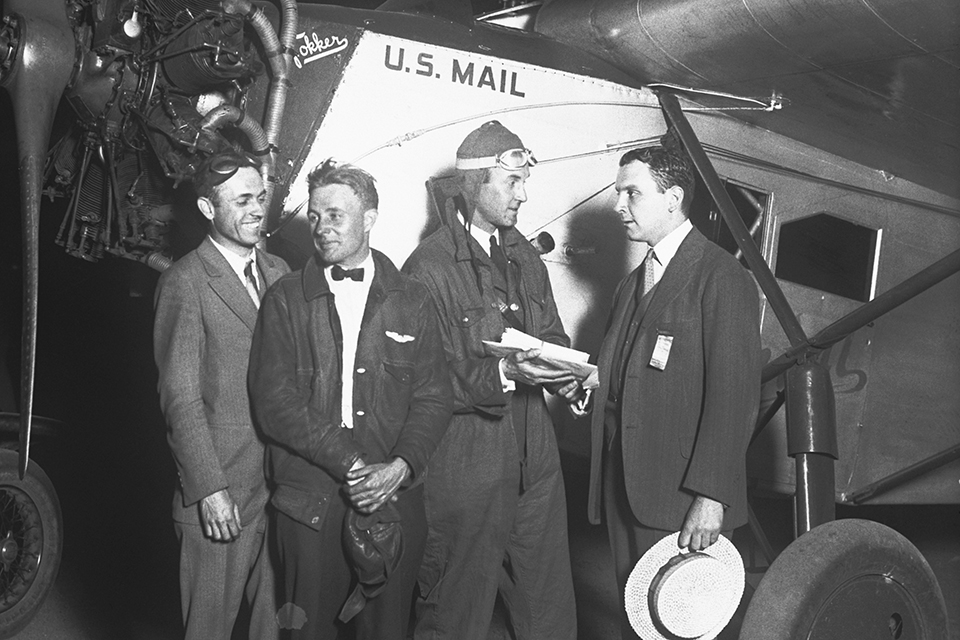
For prestige Trippe and his investors, all members of the board of directors, named Maj. Gen. John F. O’Ryan president. Trippe was appointed vice president and general manager. He soon purchased two Fokker F.VII trimotors for $37,500 apiece to expand the operation.
Shortly thereafter, during a survey flight over the Florida Keys, Trippe, with board member John Hambleton, lost two engines on one of the Fokkers. Trippe viewed their subsequent single-engine landing as proof of the safety of multiengine aircraft, but the board thought he was taking unacceptable risks in trying to expand service. Consequently, they forced Trippe out of the company.
Fellow board members Hambleton and Whitney sold their shares and loyally followed Trippe to his next venture, the Aviation Corporation of the Americas. Trippe learned of a pending postal contract for flights from Key West to Havana, Cuba. But he faced two competitors: Florida Airways, formed by World War I aces Eddie Rickenbacker and Reed Chambers, and Pan American Airways Inc., a small operation founded by J.K. Montgomery and managed by Major Henry “Hap” Arnold.
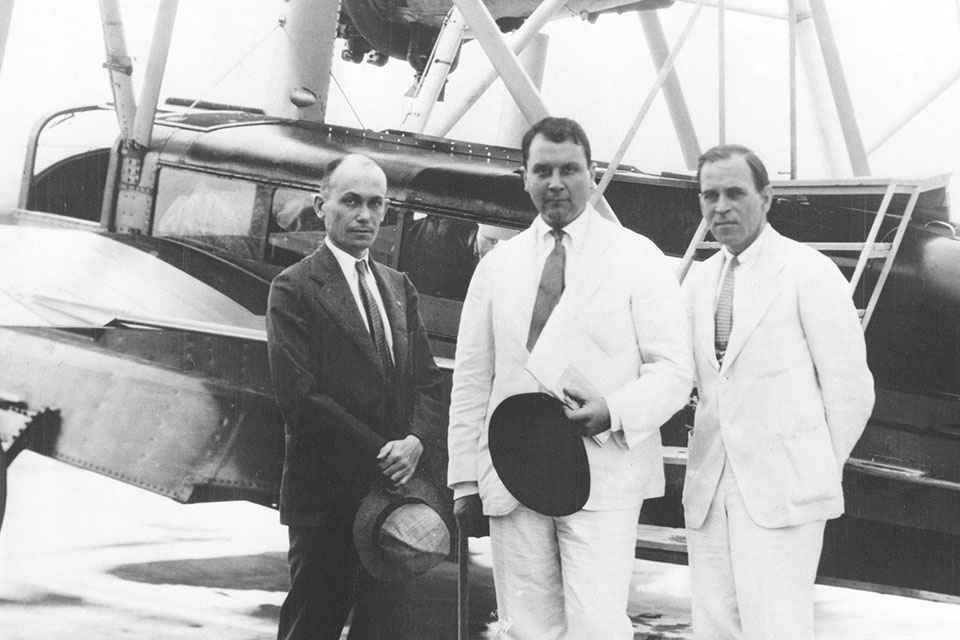
Trippe and his partners went to Cuba and talked President Gerardo Machado into an exclusive flying permit that barred all other airlines from operating into Cuban airports. With the competition emasculated, Trippe and company took over the two competing airlines, adopting the Pan American Airways name. On January 16, 1928, Pan American inaugurated F.VII passenger service between Key West and Havana.
In February 1929 Trippe formed a new airline, Pan American-Grace Airways, with J.P. Grace, who was influential on the west coast of South America through ties from his chemical company, W.R. Grace. Using Ford Tri-Motors on inland routes, Panagra, as it was known, achieved immediate success.
Concurrently, WWI ace Ralph A. O’Neill established NYRBA, flying from New York to Rio de Janeiro and Buenos Aires. Financially backed by some of the founders of Pan American, it was equipped with 14 Consolidated Commodore flying boats. The Commodore’s significant range and payload capacity offered the promise of even greater profitability. Designed as a naval patrol plane, it was reconfigured to carry 22 passengers on short-haul routes, or, by limiting its passengers and cargo, its range could be extended to 1,000 miles. The flying boat quickly proved financially successful on the seven-day, 9,000-mile route.
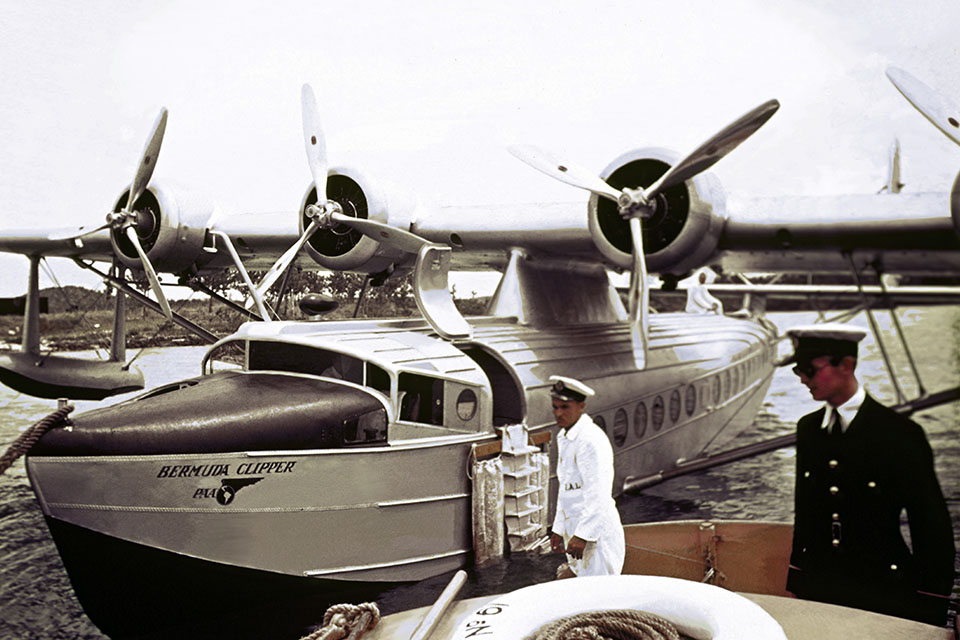
NYRBA posed serious competition for Pan American, and Trippe disliked competition. Using his significant political influence, he launched a campaign to shut down NYRBA’s mail routes. Pan Am began blocking NYRBA’s routes where they passed through areas it controlled, including Cuba.
Trippe’s efforts succeeded, and on September 15, 1929, NYRBA was forced to sell its assets to him for $2 million, at a loss to investors of about $3 million. With the Commodores, Pan Am quickly gained control of South America’s east and west coastal routes and successfully established nonstop service between major metropolitan areas throughout South America.
During the early days, Pan Am used several different airplanes on its Latin America routes. The Fokker F.VII and Ford Tri-Motor were productive on the inland routes, but there were few airports. Thus, with plenty of rivers, lakes and the ocean surface available, flying boats were the obvious answer.
The Sikorsky S-38 amphibious sesquiplane, purchased in 1928, was the first flying boat widely used by Pan Am. Powered by twin 420-hp Pratt & Whitney R-1340 Wasp engines, it had a crew of two and could carry eight passengers plus some mail. In February 1929 Charles Lindbergh and Hambleton (with Trippe along for the ride) inaugurated S-38 airmail service from Miami to the Panama Canal Zone.
Sikorsky’s next aircraft, essentially a stretched monoplane version of the S-38, was the 15-passenger S-41, which proved difficult to fly. One Pan Am chief pilot stated, “There’s nothing good you can say about the S-41.” It was followed by Pan Am’s first big four-engine flying boat, the 38-passenger S-40, the first of which was christened American Clipper. Only three were built and Lindbergh noted that with its maze of wing wires, braces and struts, “It was like flying a forest through the air.”
GET HISTORY’S GREATEST TALES—RIGHT IN YOUR INBOX
Subscribe to our HistoryNet Now! newsletter for the best of the past, delivered every Monday and Thursday.
The four-engine Sikorsky S-42 was introduced in the fall of 1934, with Pan Am purchasing all 10 that were built, giving each a Clipper name. The first, Brazilian Clipper, was used to inaugurate the Miami to Rio de Janeiro route. The advanced flying boat could carry up to 37 day passengers and the expanded crew included a full-time radio officer, flight mechanic and cabin attendant (purser).
Later a design problem developed with the S-42 involving the fuel-jettison system, which was thought to have caused a fatal accident on January 11, 1938, after Pan Am service had expanded to the Pacific. Flown by highly experienced Captain Edwin Musick, the S-42 Samoan Clipper departed Pago Pago with a crew of six when shortly after takeoff they noticed an engine oil leak and turned back for a precautionary landing. Because the flying boat exceeded the allowable landing weight, Musick decided to dump fuel. Investigators speculated that while the dumping was in progress the flaps were extended and the electric flap motor ignited the fuel, causing the aircraft to explode.
In 1934 Pan Am purchased 14 of Sikorsky’s 18-passenger twin-engine S-43 flying boats. First launched on June 1, 1935, the S-43 was equipped with 750-hp Pratt & Whitney R-1690 Hornet engines that gave it a top speed of 190 mph and a cruising speed of 166 mph. Its engines sat close together atop the 86-foot cantilever wing, which was mounted above the cabin on a short pylon. With no water rudder and close-set engines, the airplane was reportedly difficult to taxi. Yet Pan Am’s pilots liked its speed, and sometimes referred to it as the “Baby Clipper.”
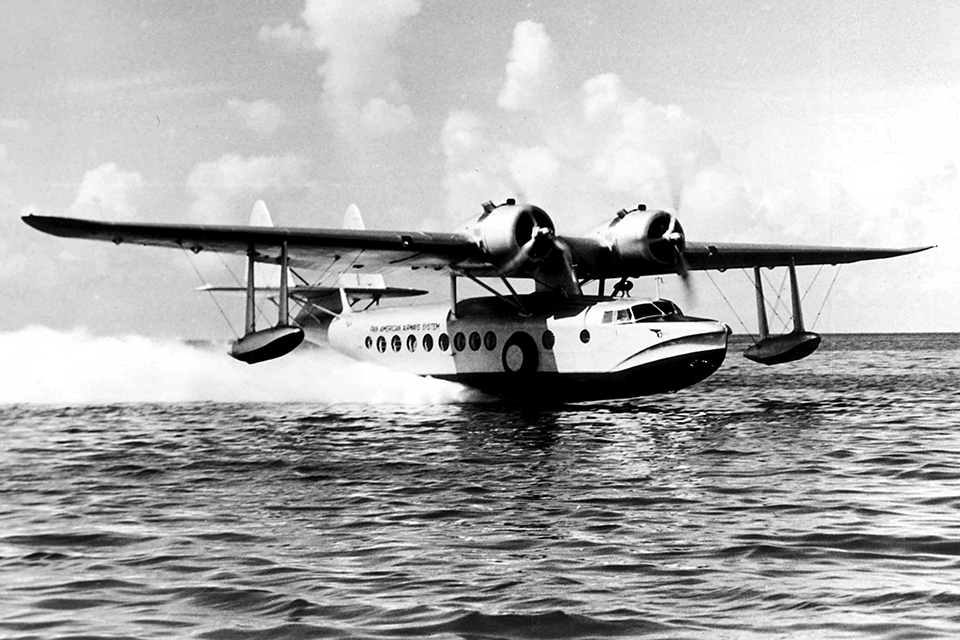
Pan Am’s long overwater flights caused serious crew fatigue problems. Civil Air Regulations limited domestic airline pilots to eight hours of flying per day and 85 hours per month. With its augmented flight crews, however, Pan Am could fly 24 hours a day. A “third officer” was on hand to periodically relieve the captain, first officer, flight engineer and radio officer. This relief pilot floated among the various crew positions and provided a necessary rest break during long over-ocean flights. The navigator, a notable exception, stood at his position without relief, often for 20 hours.
Trippe wanted Pan Am to project an image as the “merchant marine of the air,” incorporating maritime custom and lore into all areas of its operation. The captain was assisted by a first officer; distances were in nautical miles, airspeed in knots; and the kitchen was dubbed the galley, the lavatory the head. The captain enjoyed the ultimate title, “Master of Ocean Flying Boats.”
Pan Am emphasized professionalism with a touch of showmanship. Before flights the crew milled about the airplane dockside and at one bell formed up at attention. Then, in the best military tradition, they marched two at a time to board the aircraft. Once the engines were started and warmed, at two bells the passengers were escorted on board.
On October 9, 1935, the Glenn L. Martin Company delivered the first of three four-engine Martin M-130s, China Clipper, allowing Pan Am to establish transoceanic service. Originally powered by 830-hp Pratt & Whitney R-1830 Twin Wasp engines, in 1938 they were refitted with 950-hp Twin Wasps and hydromatic propellers that changed pitch automatically. With a potential range of 4,000 miles, the M-130 carried a crew of seven and up to 43 passengers, with sleeping accommodations available for 18. The M-130’s only design flaw reportedly was its single vertical fin and rudder, which caused the big flying boat to wallow in rough air, especially when the autopilot was engaged. This tended to cause air sickness among the passengers.
With Lindbergh acting as a consultant, it seemed logical for Pan Am to start transatlantic service to Europe with the M-130. But to protect their own Imperial Airways, the British refused a requirement to refuel in Bermuda. As a result, Trippe turned his eye westward, forming the Pacific Division to begin service throughout the Pacific and to China.
Using the M-130 and S-42, initial airmail service began on November 22, 1935, from Pan Am’s Alameda Yacht Club base in San Francisco Bay. The airline flew cargo and airmail on proving runs for about a year, from San Francisco to China via Honolulu, Midway, Wake Island, Guam and Hong Kong. Later, with an airmail contract to the Philippines, a stop at Manila was added. Passenger service to Manila began with a six-day journey on October 21, 1936.
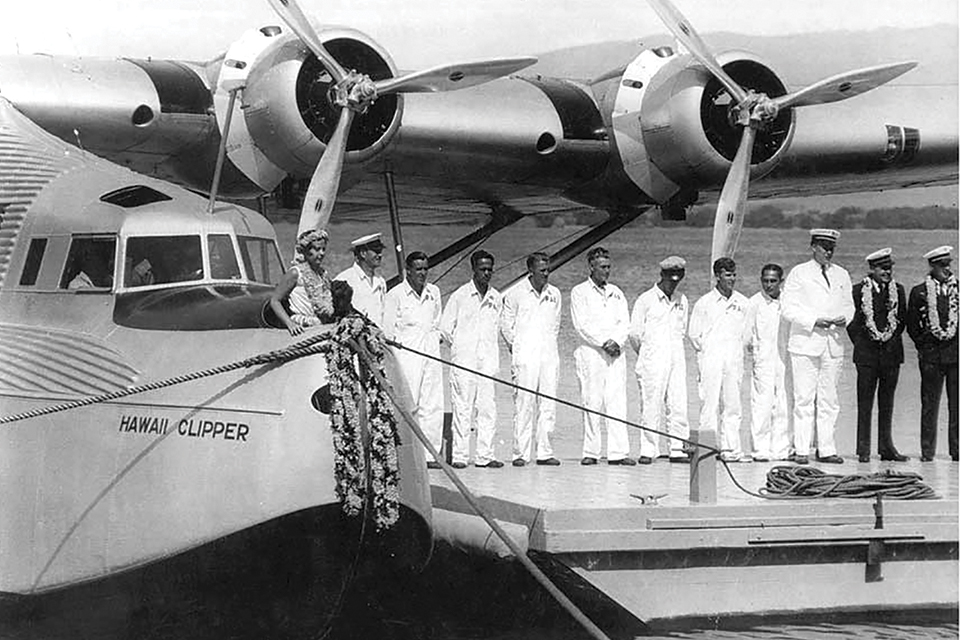
Despite their exceptional productivity, all three M-130s were lost in accidents. Hawaii Clipper disappeared without a trace on July 28, 1938, while en route from Guam to Manila. With the outbreak of World War II, the remaining two aircraft were acquired by the U.S. Naval Air Transport Service but flown by Pan Am pilots. On January 21, 1943, Philippine Clipper was lost on a flight from Hawaii to San Francisco with Rear Adm. Robert H. English and his staff aboard. Upon reaching San Francisco the Clipper’s captain found the winds and visibility too bad to risk a landing and decided to hold over the ocean until the weather improved. But the winds blew him over land, and when he later descended over what he thought was the ocean, the M-130 struck a mountain northwest of San Francisco, killing all 19 aboard.
On January 18, 1945, China Clipper was victim of a nocturnal glassy water landing attempt at Port of Spain, Trinidad. Investigators concluded that the copilot, who was flying the aircraft, misjudged its altitude over the calm, black water surface and failed to reduce his rate of descent. The flying boat broke in two on impacting the water and quickly sank. Seven of the 30 on board survived, including the copilot.
The last and greatest of the American-made flying boat airliners was the Boeing 314. Designed to carry 74 passengers and a crew of 10, it was the world’s first wide-body airplane. At a cost of $668,908 each, Pan Am contracted for six of the B-314s on July 21, 1936, with an option for six more. The first six aircraft mounted 1,500-hp Wright R-2600 Twin Cyclone engines. The initial test flight took place on June 7, 1938, with the first aircraft delivered in mid-February 1939.
After four days of crew familiarization, the first 314 departed Seattle on February 19. With the British and French now agreeable to transatlantic service, it was ferried to Baltimore, Pan Am’s Atlantic Division base. On March 3 Eleanor Roosevelt christened the airplane Yankee Clipper, and on the 26th it departed Baltimore via the Azores for the first survey flight to Europe. Revenue airmail flights to Europe began on May 20, and on June 28 Dixie Clipper inaugurated the first regular transatlantic passenger service.
By June 1939 the first six aircraft had been delivered. Sometime in the summer of 1939 Trippe picked up the option for the remaining six 314s. In March 1941 Pan Am took delivery of the first improved 314A, equipped with 1,600-hp Double Wasp engines. The original six were subsequently modified as 314As. The increased horsepower allowed the addition of three passenger seats, for a total of 74 day or 34 overnight passengers.
The December 7, 1941, attack on Pearl Harbor found three Pan Am Clippers dispersed throughout the Pacific. Captain Bob Ford was en route to Auckland, New Zealand, and flew the 314A Pacific Clipper back to the United States westbound via Australia, Java, Ceylon, Bahrain, the Belgian Congo and across the Atlantic to Brazil and on to New York City. Captain John H. Hamilton had departed Wake Island for Guam in the M-130 Philippine Clipper but was recalled and on the water at Wake when the Japanese struck. The Clipper subsequently departed with 70 people and 97 bullet holes, but they made it home successfully.
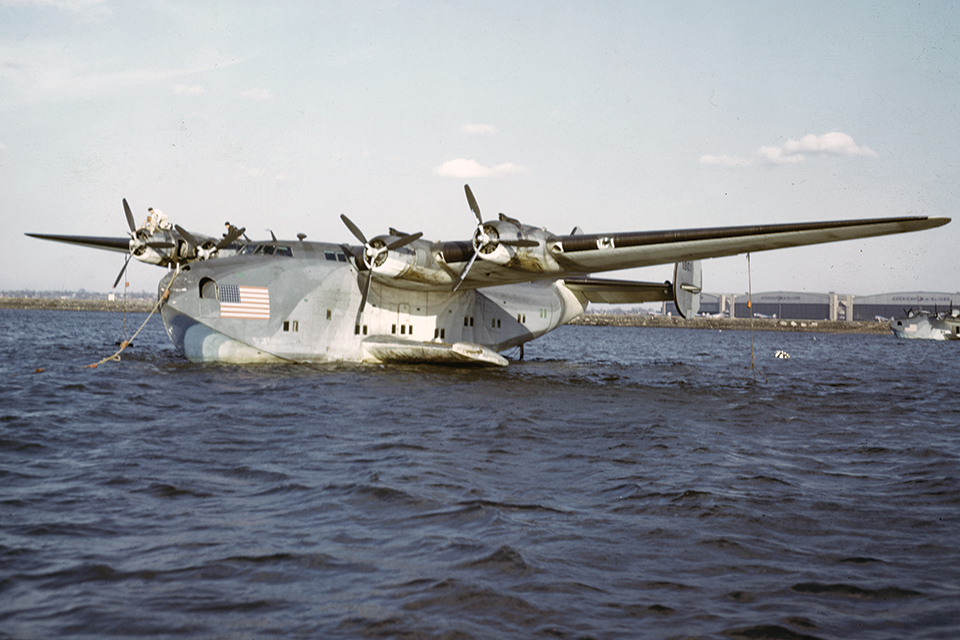
Captain Harry L. Turner was on a scheduled flight from San Francisco to Hawaii in the 314A Anzac Clipper when he learned of the attack. His scheduled arrival time would have put the flight in the middle of the attack but it had departed 40 minutes late. Turner’s daughter was having her first piano recital in Oakland, and he delayed to hear her opening piece. Then he encountered heavy traffic going to Treasure Island, where Pan Am’s operation was based. These factors, along with a long preflight briefing about the tensions with Japan, combined to save the flight from certain disaster.
By 1943, with the 12 Boeing 314s delivered, Pan Am based six at North Beach adjacent to LaGuardia Field for the Atlantic flights and three on the West Coast. The remaining three were sold to the British for use by their new national airline, BOAC. After the outbreak of hostilities, Pan Am’s Pacific Division became part of the Naval Air Transport Service.
The only 314 accident was the direct result of the calm water “mirror effect” that had led to China Clipper’s loss. Just after sunset on February 22, 1943, Captain R.O.D. Sullivan was maneuvering to land Yankee Clipper on the Tagus River in Lisbon, Portugal. But the dark, glassy water caused him to lose depth perception. A wing tip apparently touched the surface and the big flying boat crashed. Twenty-four of the 39 passengers and crewmen aboard were killed.
With the postwar Marshall Plan funding the construction of large international airports in Europe’s major cities and the growing availability of long-range, high-capacity landplanes, the flying boats’ days were numbered. At war’s end surplus DC-3 (C-47) and DC-4 (C-54) transports were available in great numbers from the military. And with certification of the four-engine Lockheed Constellation imminent, the B-314 was dated.
Captain William M. Masland piloted Pan Am’s last scheduled flight in the great Boeing Clipper. It was late December 1945 in Lisbon, and everyone wanted badly to be in New York for Christmas. With winter weather that meant the long way home, via Africa, South America and the West Indies. So, by flying three days and most of three nights and stopping only for fuel, they landed in New York at 2 a.m. on the 24th. “The night watchman met us, no one else,” remembered Masland. “No flags, no bands, no speeches, just the night watchman making his usual rounds. There never was a quieter end to a brave and glorious era.”
Frequent contributor John Lowery is a fighter pilot veteran of the Korean and Vietnam wars. Additional reading: Pan American Clippers: The Golden Age of Flying Boats, by James Trautman, and The Pan Am Clipper: The History of America’s Flying Boats 1935–1945, by Roy Allen.
This feature first appeared in the May 2021 issue of Aviation History. Subscribe today!

